Historic Roller Track Door Hardware
Here's some great architectural woodworking history: a look at old track-and-roller pocket door hardware with some original ads and patent documentation. November 14, 2014
From Carl Hagstrom, Systems Administrator at WOODWEB
I was going through some of the boxes of old door hardware I have around (my house was built in the early 1860's, and you know how it is when you never throw anything away), and came across these rollers for a pair of pocket doors that were in the first floor area. I figured some might get a kick out of how it was done in the old days.
The slick thing about these - the slot that the pulley rides in...no bearings or races - just the small diameter shaft on the pulley riding in the slot - it makes for super smooth action, with virtually no friction. For every foot the door moves, the pulley moves about an inch. I put the handsaw behind them for a sense of scale. The mechanism rides on slots and is adjusted using the machine screw. These are for use with the flat steel track that was prevalent back in that era - around 1-1/2" wide by maybe 3/16" thick.
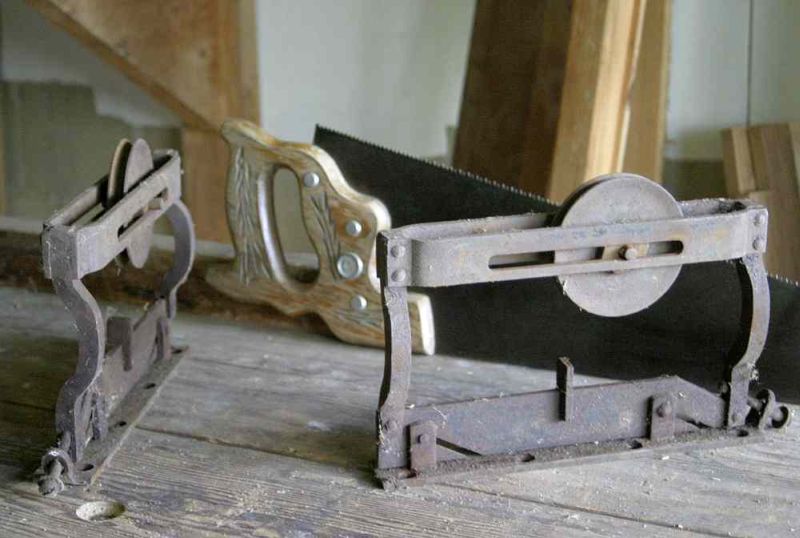
Click here for higher quality, full size image
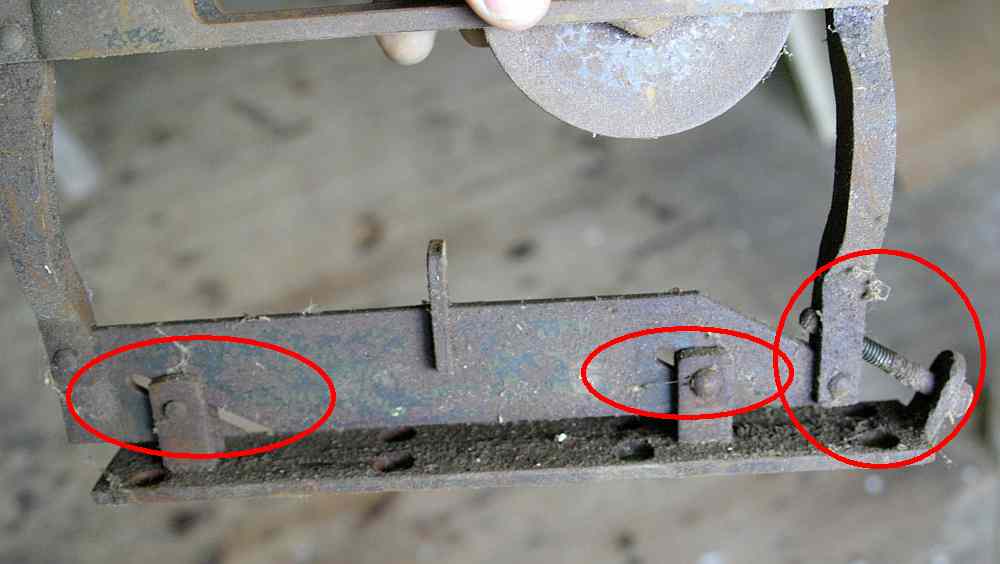
Click here for higher quality, full size image
Forum Responses
(Architectural Woodworking Forum)
From Contributor O:
That is interesting, I have never seen the rollers from that time frame - very clever with the rolling action. I have seen the tracks and heard complaints about how they fill up with dirt, hence the modern method that hangs the door from above. We have a series of restored houses here from the '20's that all have what are now inoperable pocket doors with unknown rollers, and the familiar floor track. While I object, the renovators all say that "no one can make these doors work again..." so most of them have one door fixed out, and the other in the pocket. What is old is new again. Now we are seeing those large floor tracked openings and multiple door openings.
From contributor M:
If I'm not mistaken, these are for hanging doors. The track is a bit of flat bar on edge. The pulley/wheel rides on top of the flat bar, and these pieces mount to the top of the door; nothing to fill up with dirt except the wall cavity. I have a couple of sets of carriage doors at the shop like this: not pockets though. Parts of the building are a similar vintage.
From Gary Katz, forum technical advisor::
Yes, that's the reason for the offset bracket, so the track will fit in beneath the wheel. I've never seen a wheel that moves on the carriage like that - very cool. I kind of imagine it would have to move because without a bearing, it might get hung up at times?
From contributor S:
Carl, I found the US Patent for this hardware some time ago while prepping for a class on sliding door hardware. Attached is a print of the patent.

Click here for higher quality, full size image
From Carl Hagstrom, Systems Administrator at WOODWEB
To contributor S: What a treat to see the original patent for that hardware. Was there any other documentation with the patent, or just the one page drawing? You guys are half tempting me to change the doors to my shop (they were the doors originally hung from that hardware) from their hinged configuration to sliders ;)
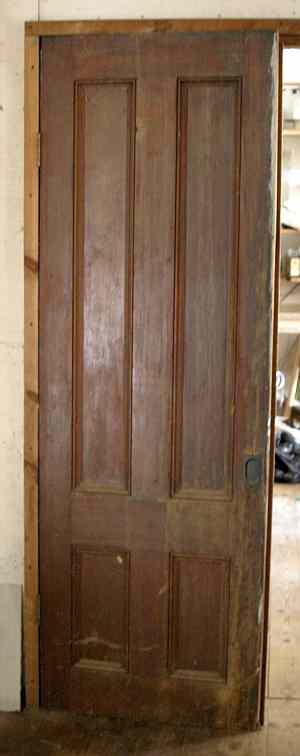
Click here for higher quality, full size image
From Contributor O:
Okay, I see how the track can run under the wheel in the offset, but that is some light weight track to span 60"-70". Or in practice were j-hangers used to support the track? So the lower half of the hardware was mortised into the door, and the other half fit into a void created above? Or all of it ran above and the door was fastened thru the holes in the bottom frame? The adjustment screw would be accessible if just screwed into the head of the doors if my logic holds. Is there anything like it today?
From contributor S:
Thanks Carl. No, there was only one page to this patent.
Contributor O - I suspect that the track was intended to be mounted bard door style, so it would have had mounting points along its length. Perhaps Carl could answer this from his experience. It would appear that the hardware was surface mounted on top of the door near the edge, so you could access the height adjustment screw from the edge.
From Carl Hagstrom, Systems Administrator at WOODWEB
You guys aren't going to let me get anything done today, I can see....I grabbed a length of track from the pile I have and took some pics - my take is that this kind of track was pretty ubiquitous back in the day. I have some barn and shed doors at my place that I've hung using old barn door roller hardware (not as refined as the type in this thread) I robbed from "dump-worthy" shed doors that were beyond repair when I bought my place. These doors work fine on this type of track.
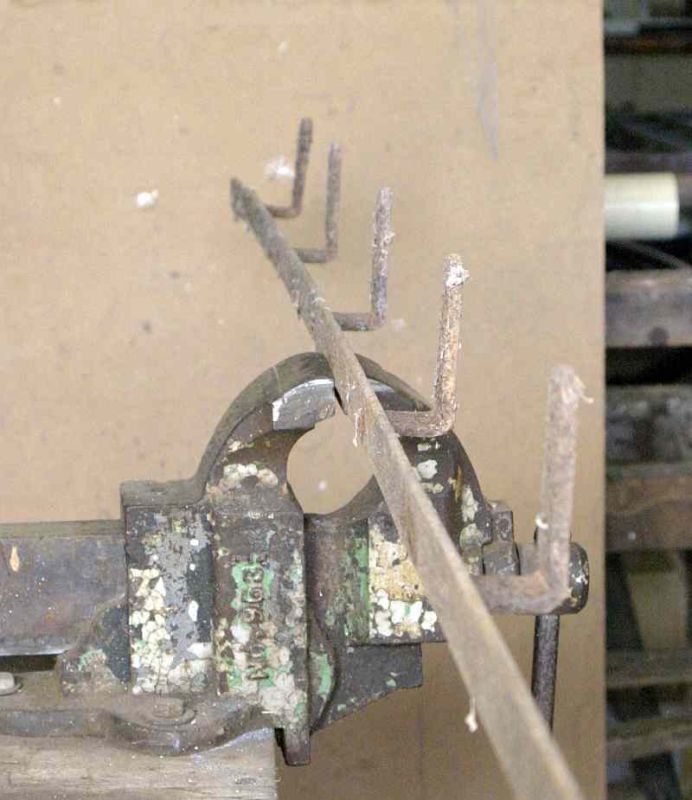
Click here for higher quality, full size image

Click here for higher quality, full size image
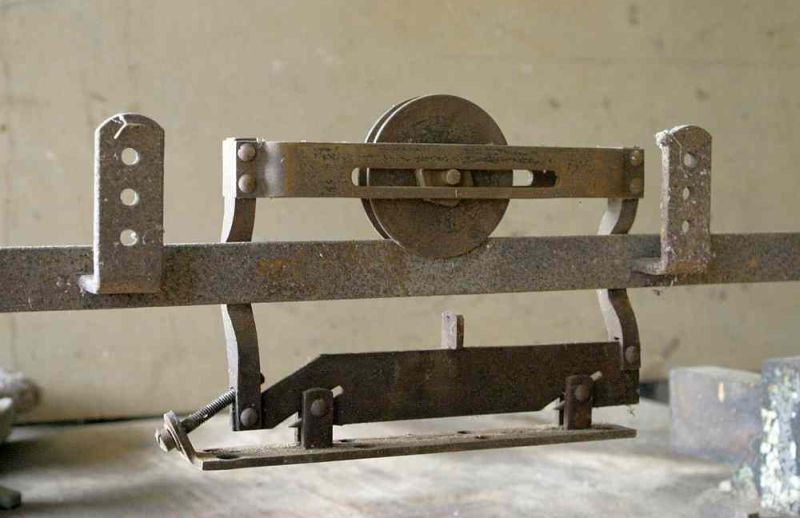
Click here for higher quality, full size image
From contributor S:
Here's an ad for the Lane Brother's Parlor Door Hardware from 1899, from the "Year Book of the Architectural League of New York, and Catalogue, Volume 14". Cool stuff.
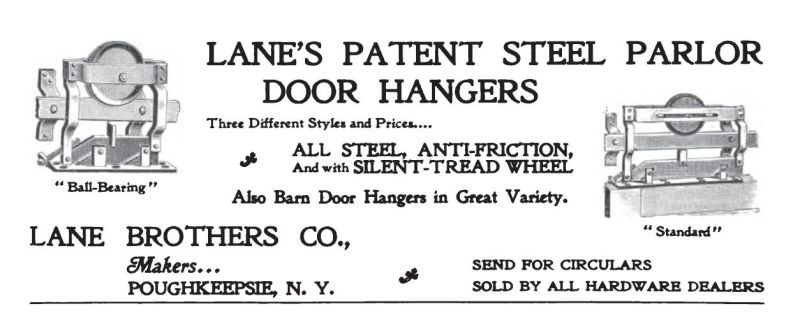
Click here for higher quality, full size image
From Carl Hagstrom, Systems Administrator at WOODWEB
As I went to put the track back, I realized that it would help to include pics of how the track joined for longer runs. The lengths I have are six and eight footers, not sure what was available back then.
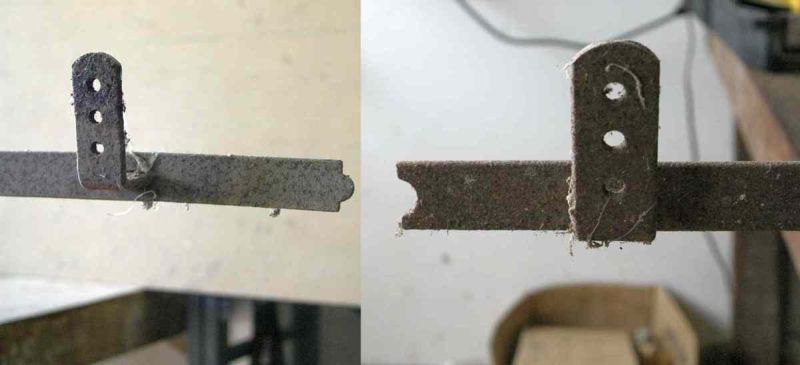
Click here for higher quality, full size image
From contributor S:
I did find it interesting that the slot was made to match the travel of the door; so look for a number that's stamped into the hardware that represents the correct travel.
From contributor M:
Or just run it along the track and measure the distance that you can travel without the slot bottoming out. Interesting bit in the article about leathering the wheels but surely not for shop doors. Looks like you're committed now. That should teach you to go poking through the treasure box, looking for stuff to throw away…








